The Standard Schnauzer is a medium-sized dog breed known for its intelligence, loyalty, and playful personality. These dogs are descended from working dogs in Germany and were originally bred to herd livestock and guard property. Today, Standard Schnauzers are popular family dogs and are also used in various working roles, such as police dogs” therapy dogs, and obedience competition dogs.
Appearance
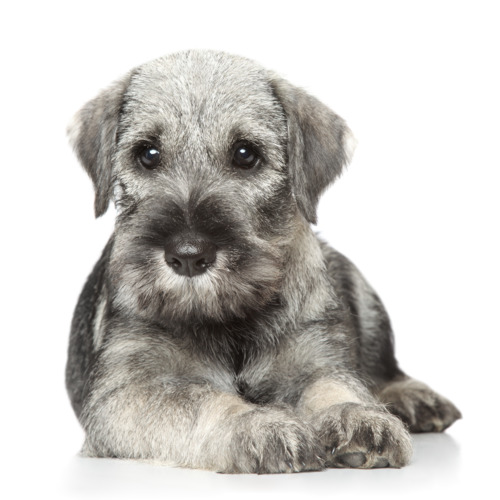
Standard Schnauzers are medium-sized dogs, weighing between 30 and 50 pounds and standing 17 to 19 inches tall at the shoulder. They have a robust, square-built frame with a double coat that is wiry and tight-fitting. The coat can be either black or salt-and-pepper. Standard Schnauzers have long, bearded muzzles and bushy eyebrows. Their ears are naturally cropped and folded over.
Temperament
Standard Schnauzers are intelligent, loyal, and playful dogs. They are also active and energetic and need plenty of exercise. Standard Schnauzers are good with children and other pets if properly socialized. They are also protective of their family and make good watchdogs.
Health
Standard Schnauzers are generally healthy dogs. However, they are prone to a few health problems, such as hip dysplasia, cataracts, and diabetes. It is important to have your Standard Schnauzer regularly checked by a veterinarian to screen for these and other health problems.
Grooming

Standard Schnauzers require regular grooming. Their coats should be brushed several times a week and trimmed every few months. Their beards should also be trimmed regularly to prevent matting.
Training
Standard Schnauzers are intelligent dogs and are easy to train. They are eager to please and respond well to positive reinforcement training methods.
Breeders
When looking for a Standard Schnauzer breeder, it is important to find a reputable breeder who is committed to breeding healthy, well-socialized dogs. Reputable breeders will screen their breeding dogs for health problems and will provide you with health certificates for your puppy. They will also answer any questions you have about the breed and will help you find the right puppy for your family.
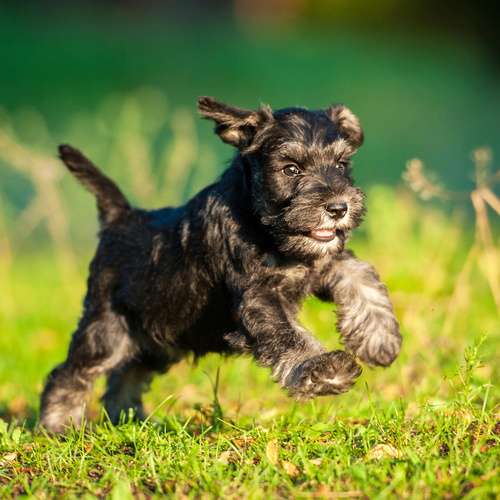
Standard Schnauzer Clubs
There are several Standard Schnauzer clubs in the United States. These clubs can be a great resource for finding a breeder, learning more about the breed, and participating in activities with other Standard Schnauzer owners.
Standard Schnauzer Breeders
Standard Schnauzer breeders specialize in breeding these intelligent, loyal dogs. When looking for a breeder, it’s important to find one that is responsible and reputable. Here is some advice on finding a good Standard Schnauzer breeder:
Research Breeders Thoroughly
Take time to research potential breeders. Look for reviews online, ask other Schnauzer owners for recommendations, and interview breeders before making a decision. Make sure they do health tests and screen for issues like hip dysplasia.
Visit Breeding Facilities
Responsible breeders will welcome visitors to see their kennels and meet parent dogs. This gives you a chance to see the conditions puppies are raised in. Look for cleanliness, space to play, and happy, healthy-looking adult Schnauzers.
Ask About Genetic Health Testing
Reputable breeders will test breeding dogs for inherited diseases common in Schnauzers like hip and elbow dysplasia, von Willebrand disease, and eye issues. Ask to see proof of this testing.
Understand Schnauzer Pedigrees
Good breeders will know detailed pedigree information and be able to explain characteristics that may be passed down from particular bloodlines. Look for experience with Schnauzer lineages.
Get References From Prior Buyers
Responsible breeders will provide references from past puppy buyers. Contact a few to ask about their experiences with the breeder and health/temperament of their dogs. This helps validate the breeder’s reputation.
Look for Signs Of Responsible Breeding
Good breeders will have a waitlist, require contracts, follow up with buyers, take back dogs if needed, limit breeding frequency, focus on health and temperament over appearance, and breed for the love of the Standard Schnauzer.
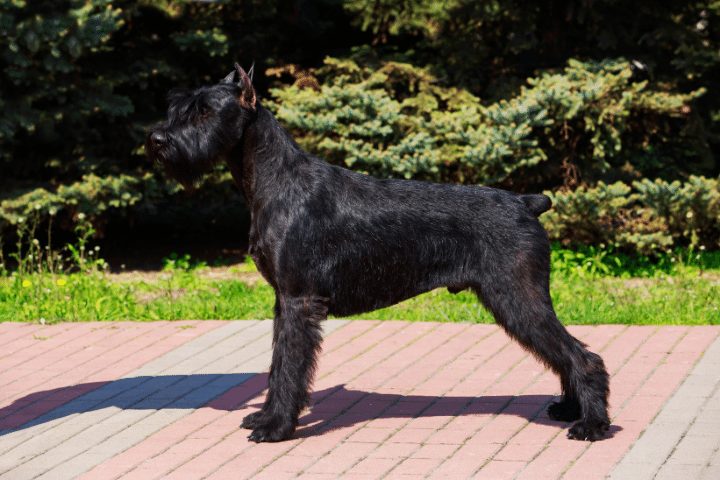
Overview Standard Schnauzer
The Standard Schnauzer is an old, distinct German dog breed. They make excellent companion, working, sporting, and show dogs due to their loyal, lively temperament and rugged build. Some key traits and facts about the Standard Schnauzer:
Origins and History
- Originated in medieval Germany as all-around farm dogs and ratters
- Descends from early Schnauzer-type dogs crossed with black German Poodle and gray Wolfsspitz
- Bred to herd livestock, guard property, control vermin
- Name comes from German word for “muzzle” referring to their bearded snout
Physical Attributes
- Medium-sized, robust, and squarely built
- Coarse, wiry double-coat that’s either black or salt-and-pepper color
- Whiskered, rectangular head with bushy eyebrows and beard
- Naturally docked tail and cropped ears
Temperament
- Intelligent, obedient, energetic, alert, and loyal to family
- Protective; makes excellent watch and guard dog
- Playful, loving, and good with children
- Active; requires substantial daily exercise
Roles and Uses
- Popular family companion and house pet
- Used as police, military, therapy, assistance, and search rescue dogs
- Excel at dog sports like agility, tracking, obedience trials
- Work as herding and livestock guardian dogs on farms
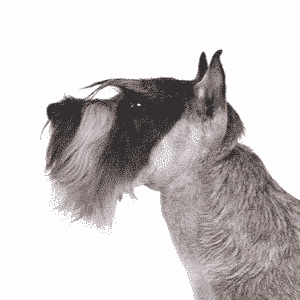
In summary, the Standard Schnauzer is a versatile working breed with distinct features and a whiskered face. They are medium in size, highly energetic, loyal to family, and their shaggy, salt-and-pepper coat requires regular grooming. Proper training and ample daily activity helps them thrive.
Pros and Cons Standard Schnauzer
The Standard Schnauzer has many excellent traits that make it a popular companion and working dog breed. However, there are also some challenges to owning this energetic, robust breed. Weighing the pros and cons is important when considering adding one of these bearded dogs to your life.
Pros
- Devoted, affectionate, and loving family dogs
- Minimal shedding makes them a good choice for allergy sufferers
- Usually good with children and do well in families
- Only moderate barkers but will alert owners to anything unusual
- Highly intelligent, obedient, and willing to please owners
- Fun loving; enjoys games and recreational activities
- Courageous and protective; excellent watch and guard dogs
- Sturdy and robust; a healthy breed with good longevity
Cons
- Coarse coat requires regular brushing, clipping, and stripping
- Need a lot of activity and exercise daily
- Can be rambunctious and rowdy if not properly trained
- Tendency to chase small animals like cats if not socialized early
- Breed has a stubborn streak and needs confident handling
- Prone to some health issues like hip dysplasia, eye problems
- Proper care and grooming requires time and financial commitment
Overall, these energetic working dogs can be wonderfully devoted family companions and protectors for those willing to provide proper care, training, activity levels and responsible breed research. Their exercise, grooming and shedding considerations should be understood before adopting one.
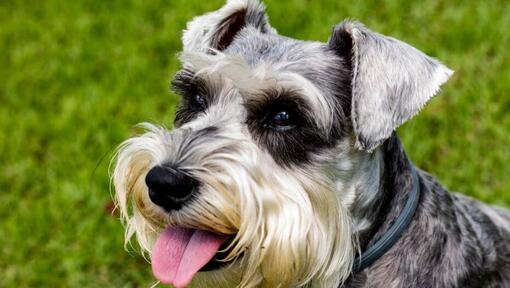
Similar Products Standard Schnauzer
The Standard Schnauzer has some similarities, both in appearance as well as temperament, to a few other medium-sized working, sporting, and terrier style breeds. Some comparable breeds include:
Giant Schnauzer
The Giant Schnauzer is a much larger relative of the Standard, weighing 75-100 pounds or more, yet with a very similar salt-and-pepper coat, beard,cropped ears and docked tail as well as comparable temperament. Giants can carry out similar functions such as police dogs but require even more activity and exercise.
Bouvier des Flandres
The Bouvier has a shaggy coat that can be various shades of gray or even fawn. This breed is slightly larger, very powerful and protective, with high energy levels and exercise needs equal to that of the Standard Schnauzer. Their beard and eyebrows give them a comparable expression.
Airedale Terrier
This breed is slightly taller with coat colors of tan, black and gray. Their wire-haired coat sheds less but still requires stripping routinely. While energetic like the Schnauzer, Airedales have a stronger prey drive making them more prone to chasing small furry pets if not trained properly. Both serve well as working farm dogs and police canines.
Kerry Blue Terrier
The Kerry Blue Terrier shares a comparable body shape, size, and energy level with the Standard Schnauzer but has a soft, wavy blue-gray coat instead of stiff wiry fur. Regular brushing and bathing is needed for the Kerry’s coat upkeep. Kerry Blues also exhibit more dominant behavior requiring an experienced owner.
Conclusion
In summary, the Standard Schnauzer is an exceptional breed that excels as a loyal companion, guard dog, and at many important working roles. They are energetic, robust, and highly trainable when given sufficient activity and exercise. Though grooming and shedding considerations exist with their dense, wiry coat, these dogs repay proper care with boundless devotion and obedience towards their adopted families while retaining an alert, protective demeanor. Taking the time to research their pros, cons and requirements helps ensure a good fit and mutually fulfilling relationship when welcoming one of these whiskered dogs into your home.